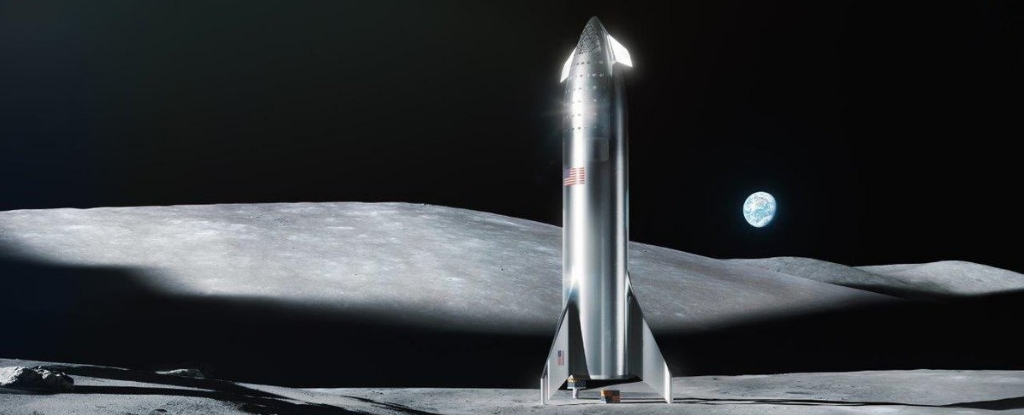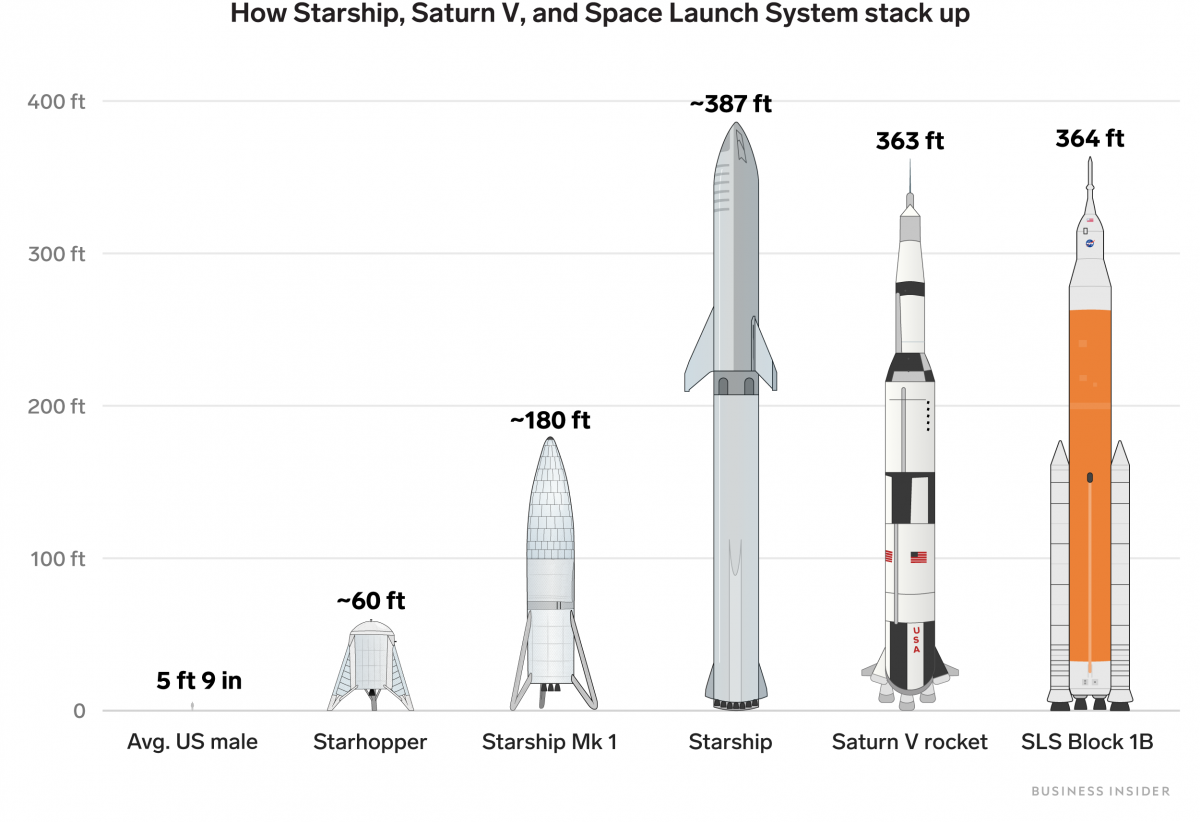Locals at the southern tip of Texas took in an otherworldly sight on Thursday night: A giant mirror-polished machine roared to life near a beach, and through a billowing cloud of orange-coloured smoke, rose six stories into the sky, hovered, and then gently landed.
Though the launch lasted less than a minute, the late-night spectacle was the first true flight of SpaceX's Starhopper rocket ship. It represents a key step in company founder Elon Musk's quest to send people to the Moon and Mars.
Starhopper, which resembles a three-legged water tower, was hardly visible through the smoke and darkness, but Musk said on Twitter that the test worked.
"Starhopper flight successful. Water towers *can* fly haha!!" Musk tweeted after the test launch, later sharing the footage of the flight, below.
Drone cam pic.twitter.com/gVdMrMgUZq
— e^👁🥧 (@elonmusk) July 26, 2019
The launch started brush fires that firefighters worked to contain, but then spread overnight into a nearby wildlife refuge. However, a Facebook video posted on Friday showed emergency workers arriving on the scene and unreeling hoses to fight the flames.
"A brush fire occurred after our first successful Starship prototype hop. The SpaceX team is working with the Brownsville Fire Department to manage the incident, which is well under control," a spokesperson from SpaceX told Business Insider in an email.
"As always, precautions were taken to ensure public safety, and nearby residents are well outside the pre-established safety zone perimeter."
Why Starhopper's flight is a step to get SpaceX to the Moon and Mars
Starhopper isn't designed to fly into space. Instead, it's a test bed for technologies that could eventually power a much larger and more powerful launch system known as Starship.
Musk envisions Starship as a nearly 400-foot-tall, fully reusable, and stainless-steel vehicle that can ferry about 100 people and more than 100 tons of cargo at a time to Mars.
Starhopper stands about 60 feet tall, 30 feet wide, and uses one Raptor rocket engine; meanwhile, a full-scale Starship headed for deep space could use more than 41 such engines, according to Musk.
 (Elon Musk/SpaceX)
(Elon Musk/SpaceX)
The rocket engines are essential yet expensive, which is why SpaceX is testing limited numbers of them on crude vehicles like Starhopper – to discover any issues early on, save money, and develop the Raptor into safe and reliable spaceflight hardware.
Musk's eventual goal is for Starship to be capable of launching and landing many times with little to no refurbishment required. This, he says, may reduce launch costs by 100- to 1,000-fold compared to traditional, single-use rockets.
"Full and rapid reusability is the holy grail of access to space and is a fundamental step towards it, without which we cannot become a multi-planet species," Musk recently told Time's Jeffrey Kluger in an interview for CBS Sunday Morning.
"We cannot have a base on the Moon, we cannot have a city on Mars without full and rapid reusability."
But getting to that stage will likely require years of testing, and Wednesday's launch was a crucial first step.
A hard-won hop-and-hover flight
SpaceX began constructing Starhopper near Boca Chica Village, Texas around November 2018. Musk showed off the vehicle in January, and then SpaceX launched it on its first "hops" (as Musk calls them) in early April.
Those initial tests anchored the rocket ship to the ground via huge chains on its legs, so Starhopper lifted no more than a few feet into the air.
On Wednesday, there was a failed launch attempt around 8:32 p.m. ET (7:32 p.m. CT). Just moments after ignition, the vehicle's engine abruptly shut down. The launch on Thursday, however, was deemed a success.
"It appears as though we have had an abort on today's test," Kate Tice, certification engineer at SpaceX, said during a live broadcast. "As you can see there, the vehicle did not lift off."
But SpaceX rallied and tried again on Thursday.
Amid a blast of sand and rocket-engine exhaust, Starhopper presumably flew at least 65 feet (20 meters) into the air at around 11:45 p.m. ET (10:45 p.m. CT). It then hovered for a moment, translated sideways a bit, and touched down on a concrete landing pad it left from.
The whole flight lasted roughly 10 seconds, following a plan that Musk described earlier this month. In addition to aerial footage, Musk also posted a video on Twitter that shows Starhopper's launch from a camera attached to its underside. The clip clearly shows a Raptor engine propelling the vehicle off the ground.
Engine cam pic.twitter.com/3cWHU50353
— e^👁🥧 (@elonmusk) July 26, 2019
The videos below, captured by locals and SpaceX followers, show the entire launch from multiple perspectives.
The first is by Spadre.com, which recorded the hop from a camera located about 6 miles away on South Padre Island.
The second is a video by a local named Mary, which NASASpaceFlight.com uploaded to YouTube with her permission, and it shows a closer view of the Starhopper.
Although it's difficult to make out, the top of the vehicle briefly rises above the smoke and flames in the footage.
Thursday's flight showed that SpaceX has successfully developed a new rocket engine capable of powering, manoeuvring, and landing a large vehicle like Starhopper.
Critically, the engine burned liquid methane, which makes up most natural gas on Earth and is also a fuel Musk hopes to manufacture on Mars.
What's in store for Starhopper and Starship
With a successful untethered flight under its belt, the company is now aiming to launch Starhopper on a flight to more than 650 feet (200 meters) "in a week or two," Musk said early Friday morning.
SpaceX's current government licence permits the company to launch experimental vehicles like Starhopper on flights lasting no more than six minutes and up to a maximum altitude of 3.1 miles (5 kilometers).
But SpaceX isn't stopping there: It's now building much bigger 180-foot-tall (55-meter-tall) rocket ships, called Starship Mark 1, which Musk says could fly from Texas or Florida in two to three months and reach orbit by the end of the year.
 (Yutong Yuan/Samantha Lee/Business Insider)
(Yutong Yuan/Samantha Lee/Business Insider)
Musk tweeted in March that SpaceX is "working on regulatory approval" for orbital flights of those prototypes, which will have three Raptor engines each instead of one.
SpaceX plans to launch a full-scale Starship before the end of 2020. Then sometime in 2021, Musk says, the company may trying landing a full-scale, uncrewed Starship on the Moon (perhaps as a bold demonstration to NASA).
Around 2023, SpaceX plans to launch Starship's first human passengers, a Japanese billionaire and his hand-picked crew of artists, on a voyage around the Moon.
SpaceX president and COO Gwynne Shotwell has reportedly said the company hopes to send its first uncrewed payloads to Mars by 2024. Following that, perhaps in 2026, SpaceX may try to put boots on the red planet.
During the groundbreaking ceremony for the Boca Chica launch site in September 2014, Musk said, "it could very well be that the first person that departs for another planet could depart from this location."
This story has been updated with new information. It was originally published at 11.45 pm ET on 25 July 2019.
This article was originally published by Business Insider.
More from Business Insider:
#Space | https://sciencespies.com/space/spacex-just-passed-a-huge-first-test-with-its-prototype-mars-spaceship/
No comments:
Post a Comment